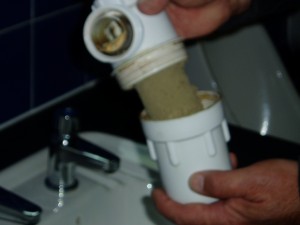How it works
“The problem with conventional urinals and water-reducing urinals”
A standard, water-based urinal uses an average of 2 litres of clean drinking water each time it is used. By introducing water to the system you create the perfect breeding ground for bacteria. Water also contains limescale, which combines with the uric acid salts to cause blockages and bad smells.
Already saving water? Think again!
We are increasingly finding customers who are already taking steps to save water. Yet they are unaware of the big problem waiting to happen. Many systems simply reduce the number of times a urinal is being flushed. This saves some water but it creates a potential disaster waiting to happen – blocked pipes.
Here’s the science. When the mixture of urine and water is static in the pipes, the uric acid salts in the urine and the limescale in the water react to form hard scale. This over time severely blocks the pipes. Reducing the water alone means that urine remains static in the pipes. A soft sludge is formed and mixed with debris such as hair it forms a “hedgehog” which causes blockages and bad smells.
This hidden time bomb not only creates blockages and bad smells but may cause costly flooding and the blocked pipes will have to be replaced. You may think you are saving some money yet you are more than likely creating a bigger problem that could cost you thousands!
This is an example of a customer’s pipes. They believed that by simply reducing flushing saved water but they did not realise they were sitting on a disaster waiting to happen! Not any more now they have converted to the Free Flow Valve.
Water flushing is costly and bad for the environment. An average urinal will use up to 100,000 litres of water every year. Conventional and even water -reducing urinals are costly, smelly, unhygienic and likely to block and flood your washrooms. You have to pay more for maintenance and odour masking solutions, making it very expensive.[/pane]
- Remove the grate waste fitting and water trap/ u-bend
- Clean away any debris build up or old putty from the urinal
- Make sure the waste line is clear of any sludge or blockages
- Install the valve and connect straight into the waste line using flexible piping or an elbow and connectors. It may be easier to replace existing pipe back to an existing joint so as to make the connection to the valve simpler and give the maximum fall possible
- Use silkaflex or silicon to make sure the waste is securely fitted into the urinal
- Firmly insert the Enviro Water Free Flow Valve into the waste and check for leaks
- Turn off water supply
- Using a pair of thin pliers (nose pliers are ideal) carefully turn the valve left or right and lift out the cartridge from the sleeve
- Discard the cartridge, keeping the outer sleeve in place in the waste pipe
- Simply push the new cartridge into the sleeve
- The water free urinal is ready to use
- The old cartridge can be fully recycled and should be returned to the supplier
- Wipe down and wash down the urinal using only mild soapy water i.e. add some mild soap to a bucket of warm water and use a cloth to wash the porcelain or metal urinal down.
- Once the urinal has been wiped down pour the remaining mild soapy water down the urinal to remove any droplets of urine that have not passed through the trap.
- A dash of washing up liquid directly into the valve will keep it clean and stain free.
- Disinfectant, Bleach, Acid or any other harsh toxic liquid.
[/accordion]

We are so confident you will love the product we offer a money back guarantee. If you are not happy with the items simply return the valves in their original packaging within 30 days of purchase and we will give you a full refund. Postage costs are non-refundable and the money back guarantee is invalidated if any harsh chemicals have been used on the valve. The valve must be cleaned with mild soapy water only.





